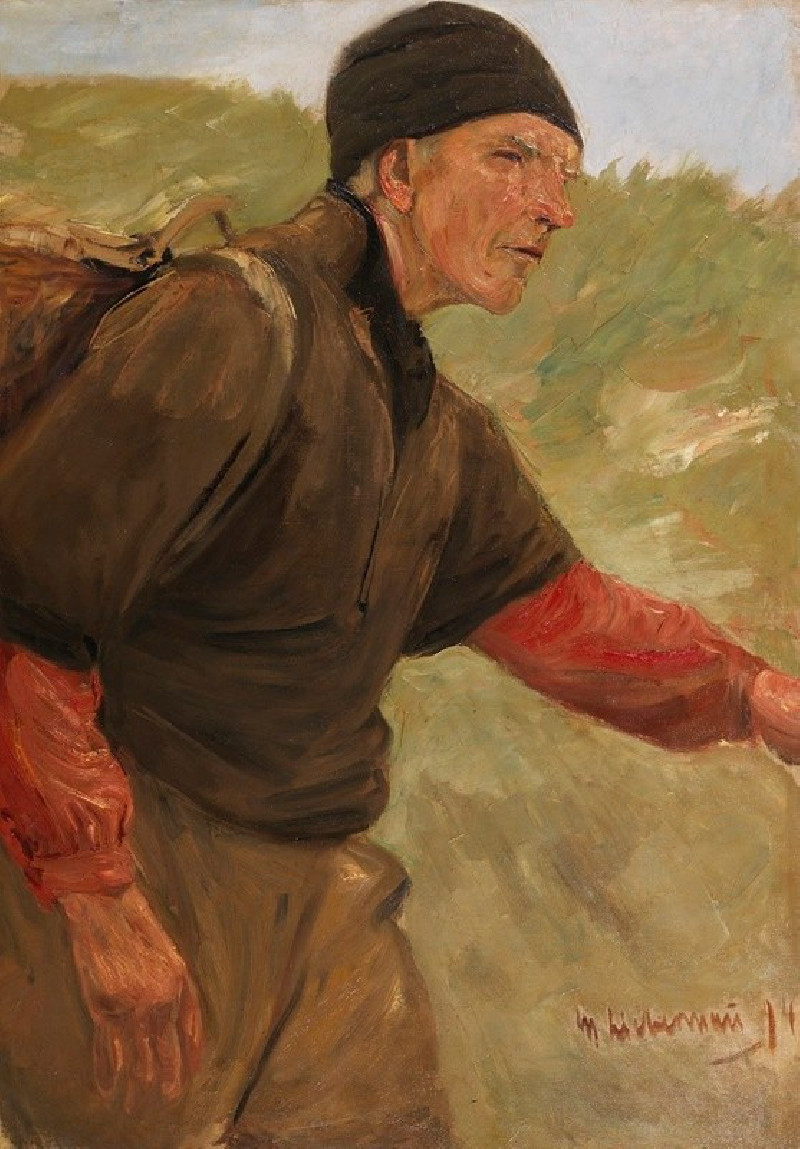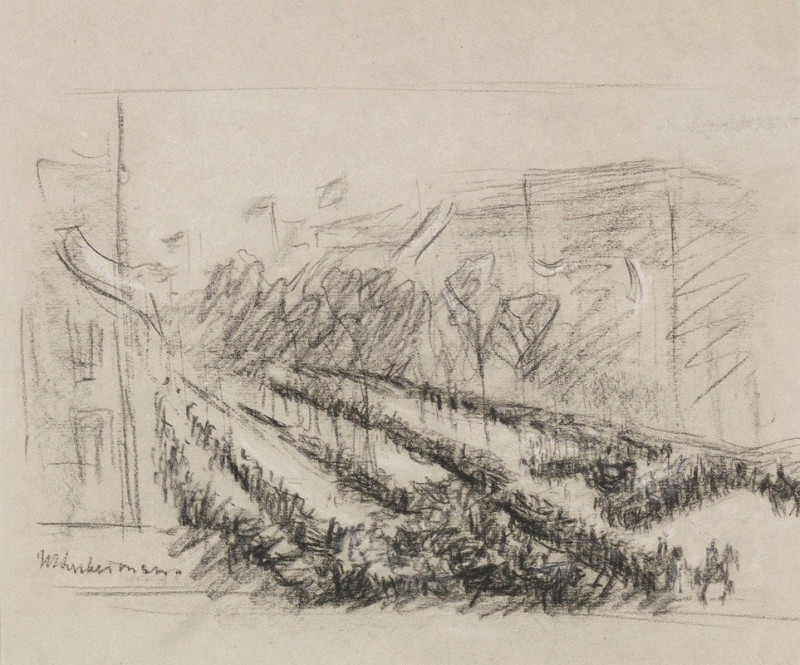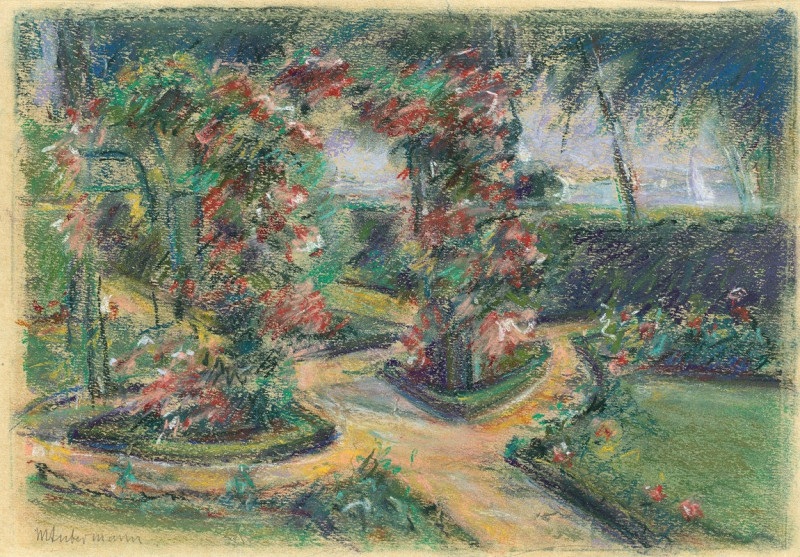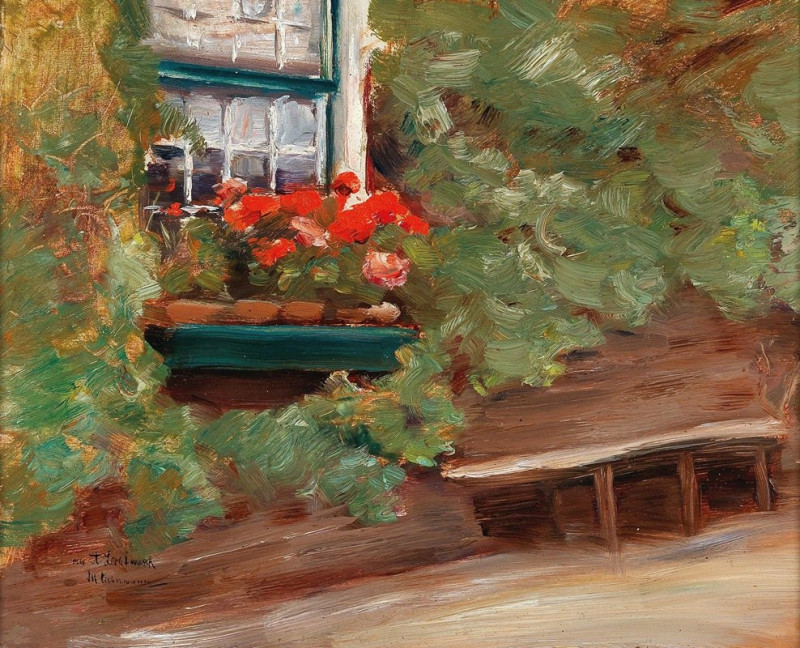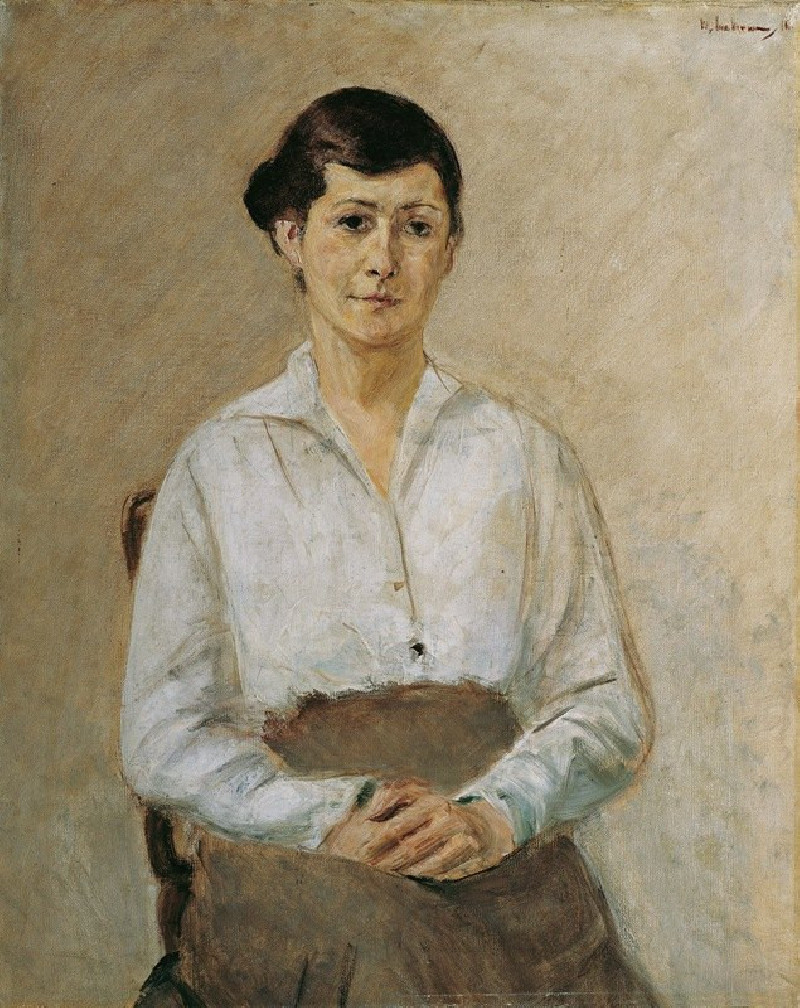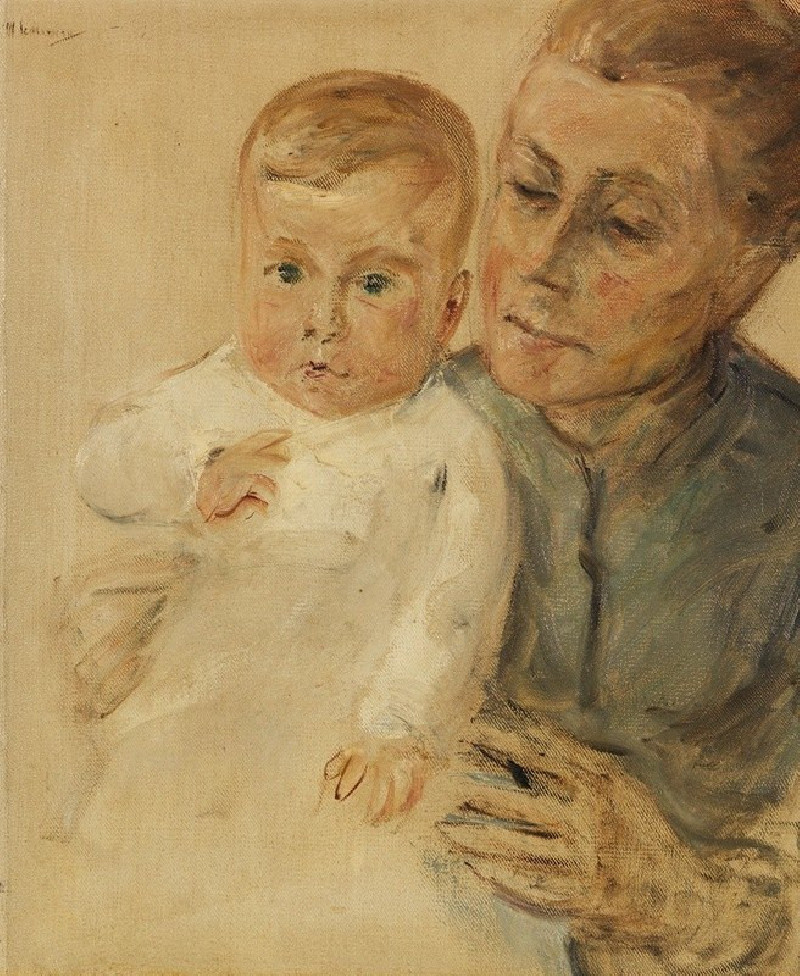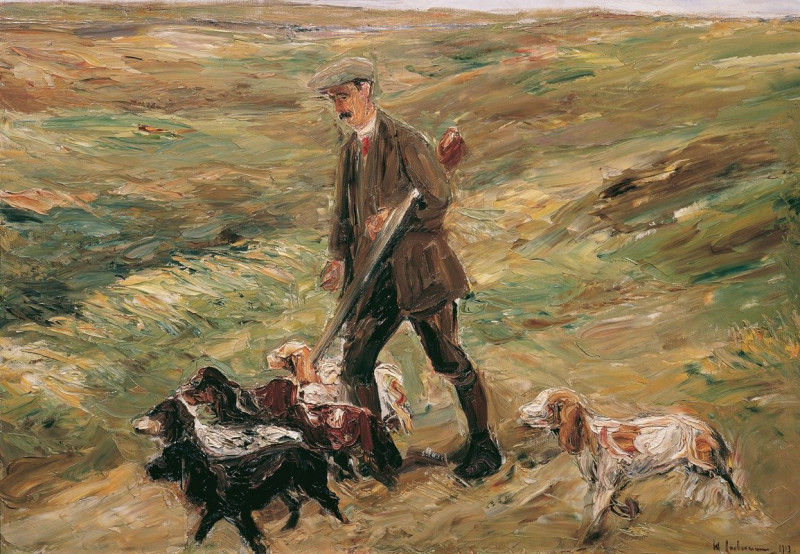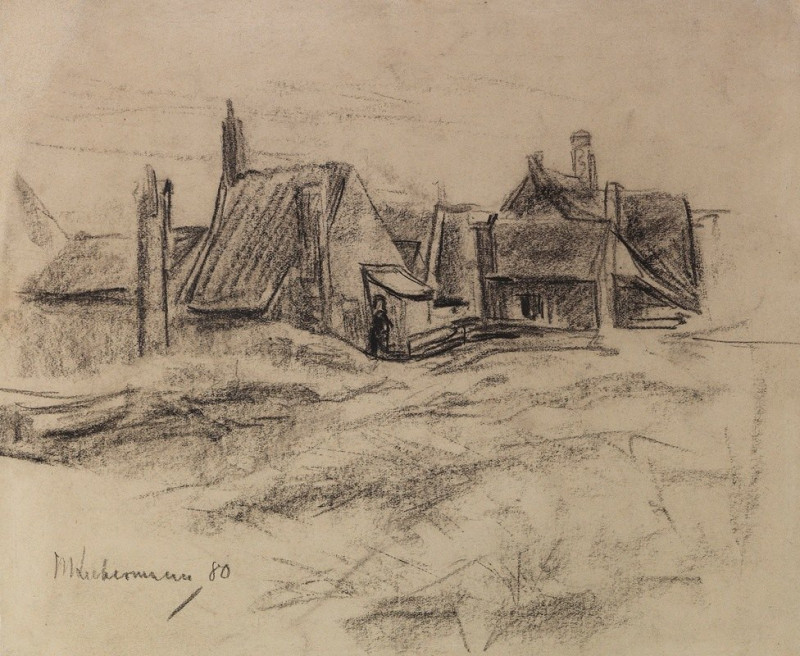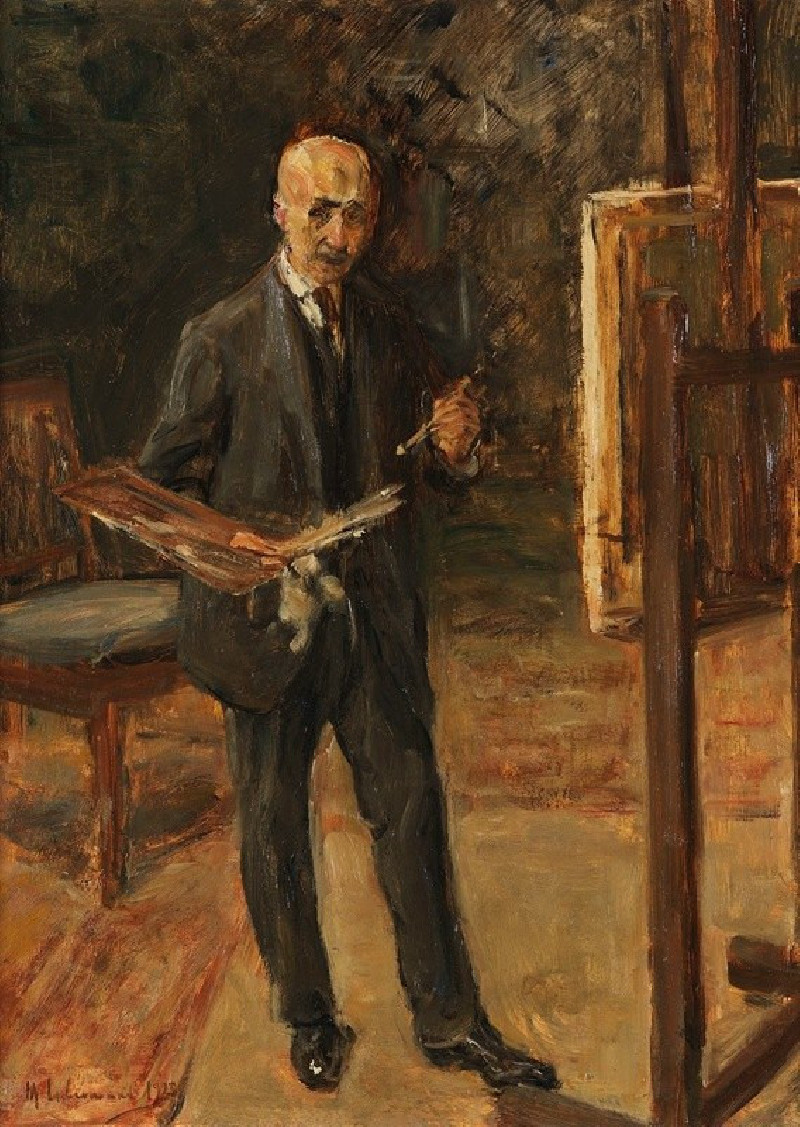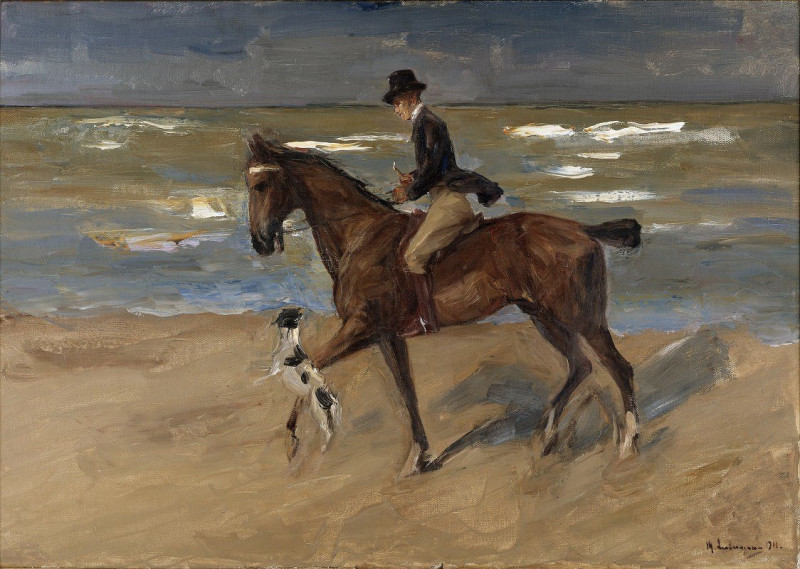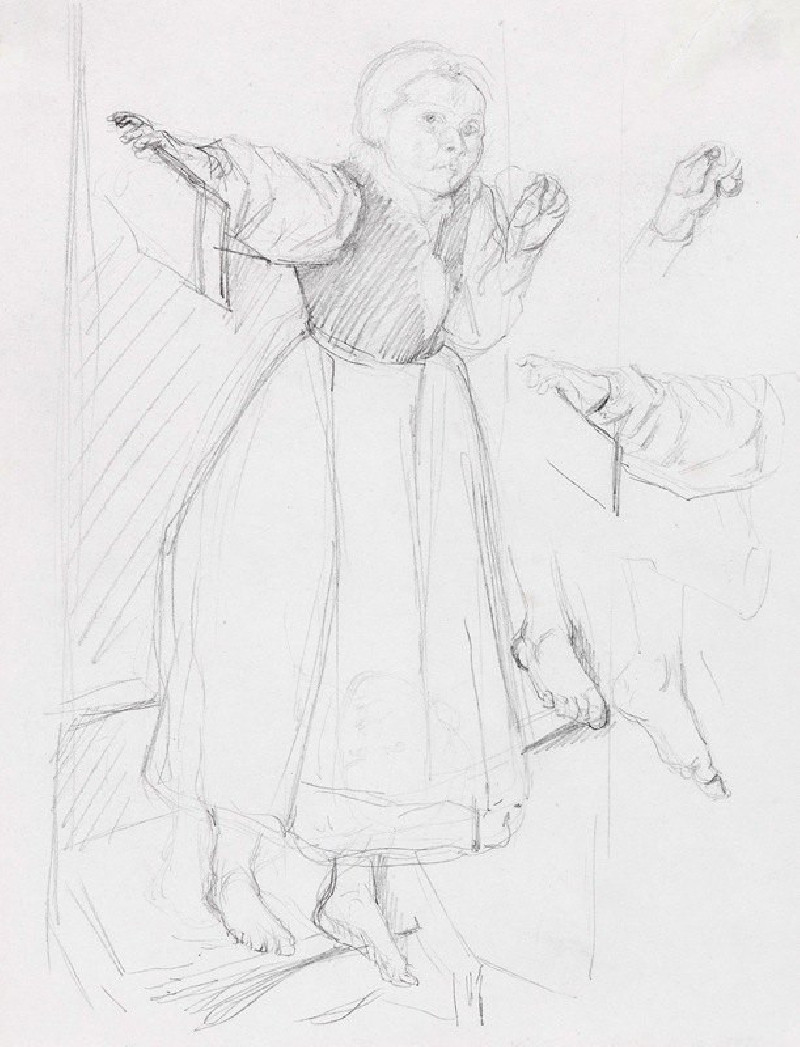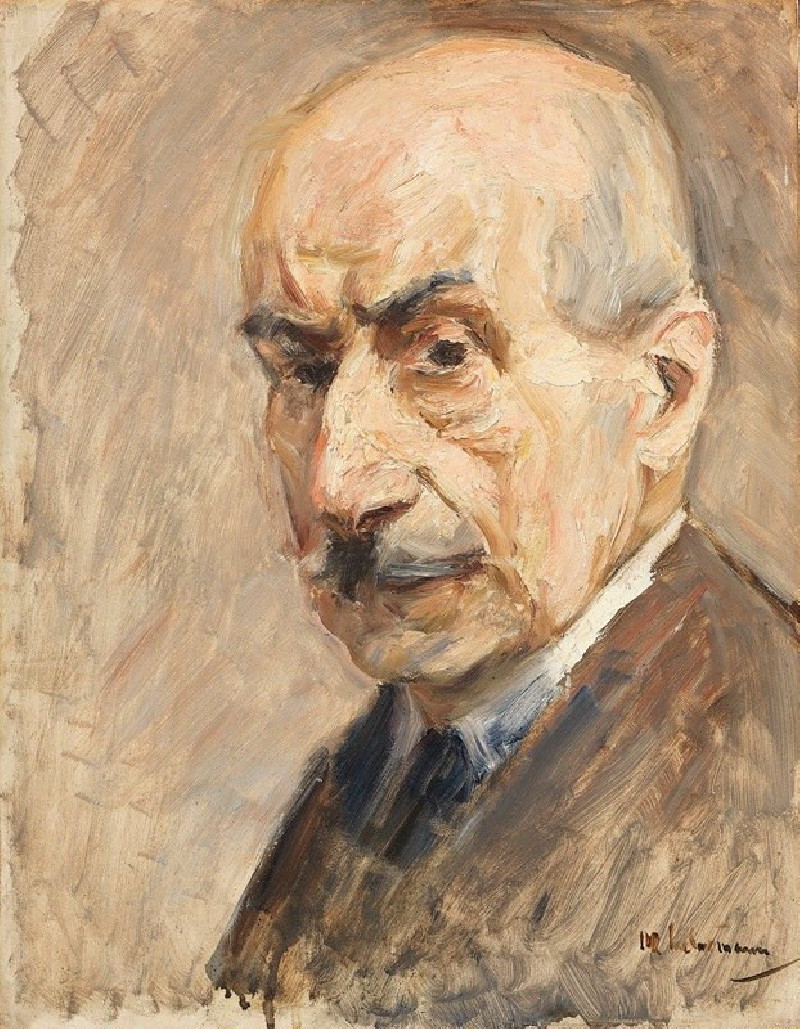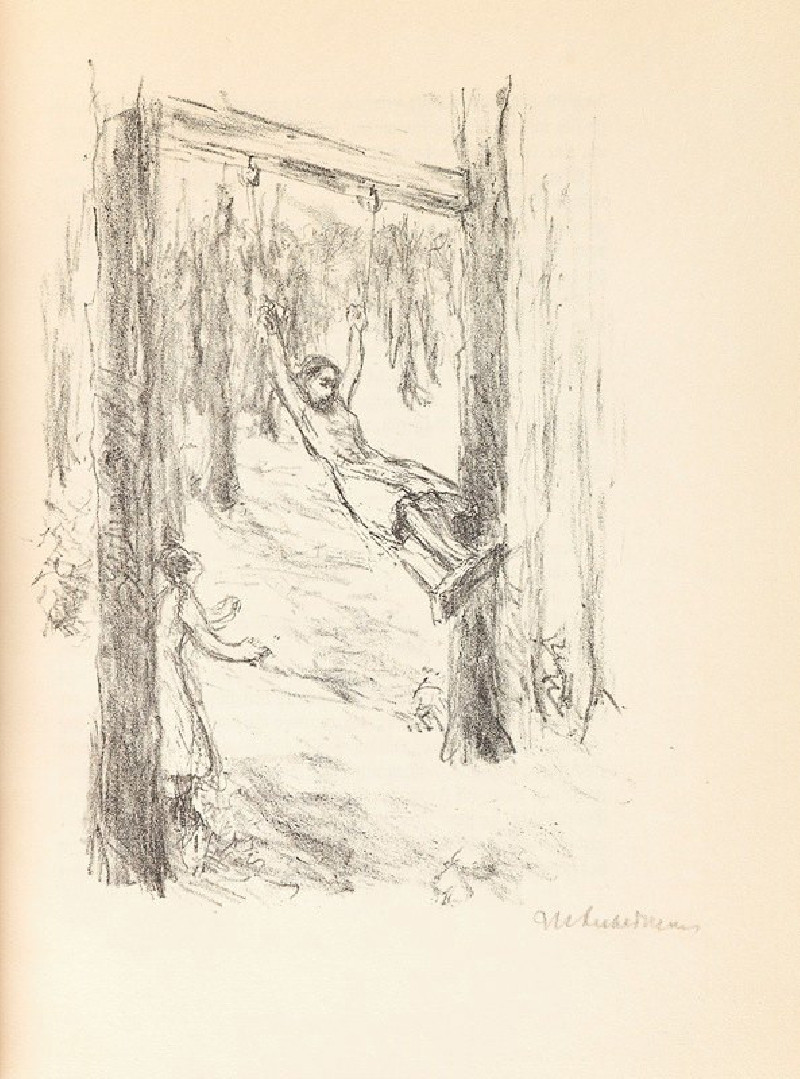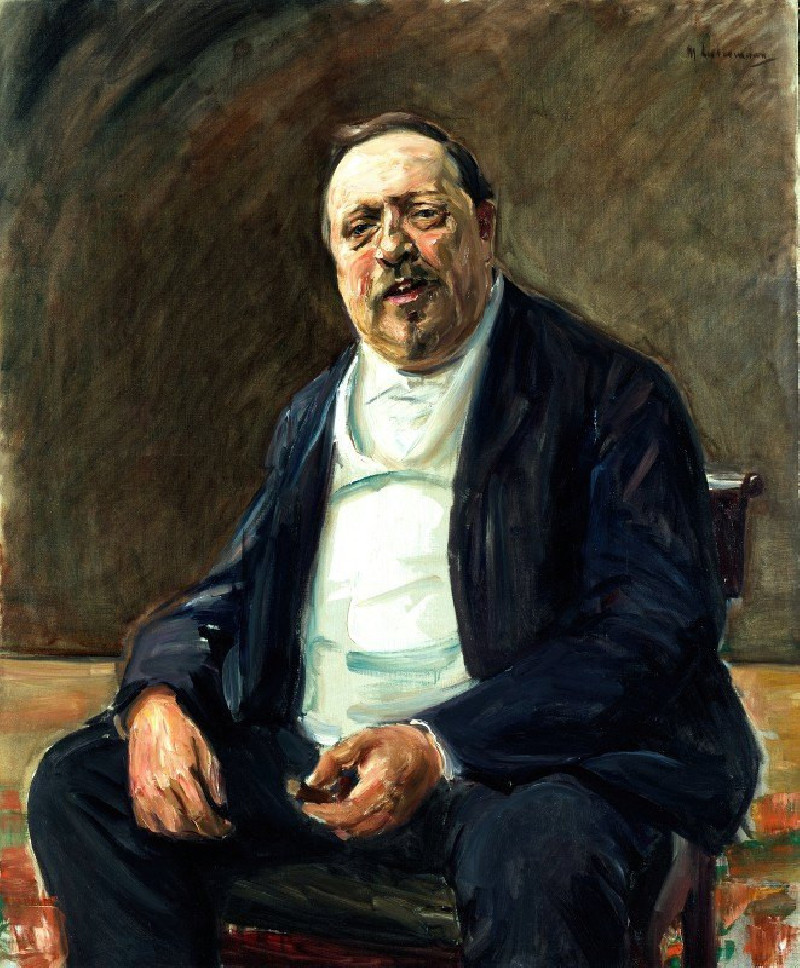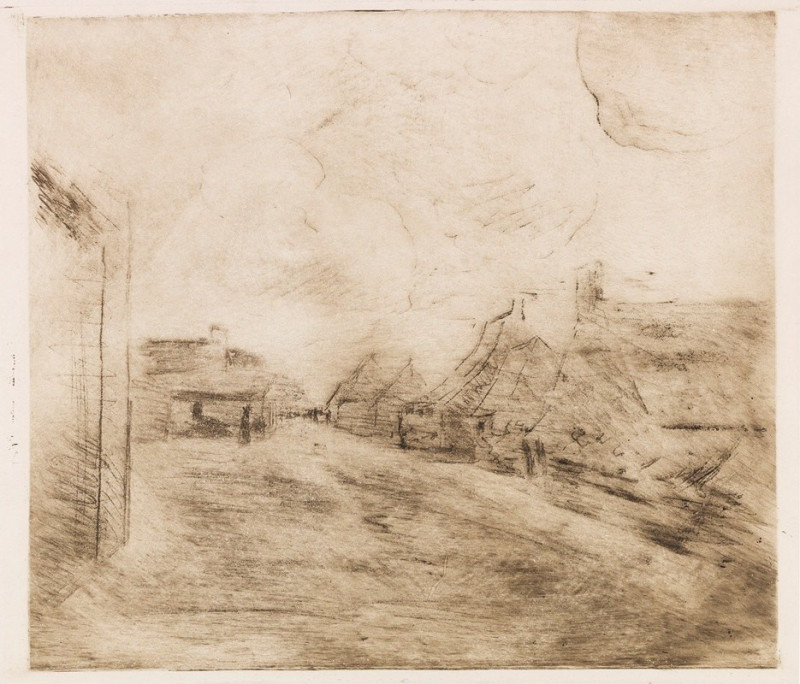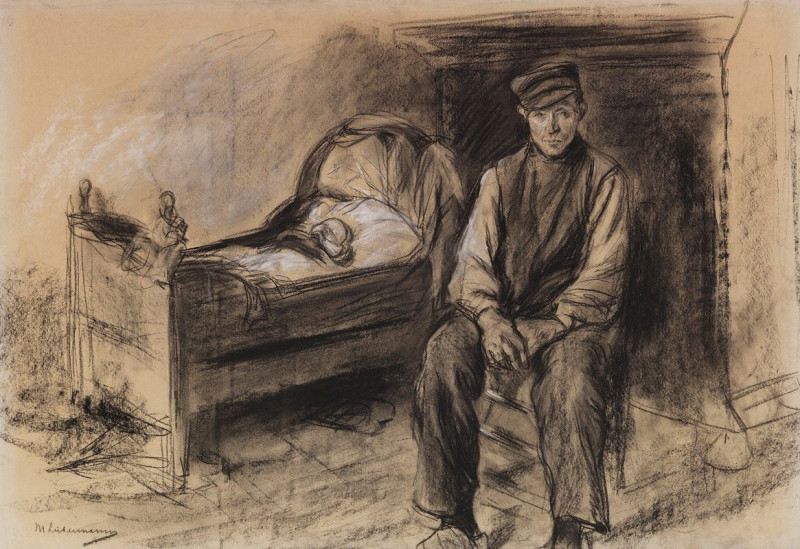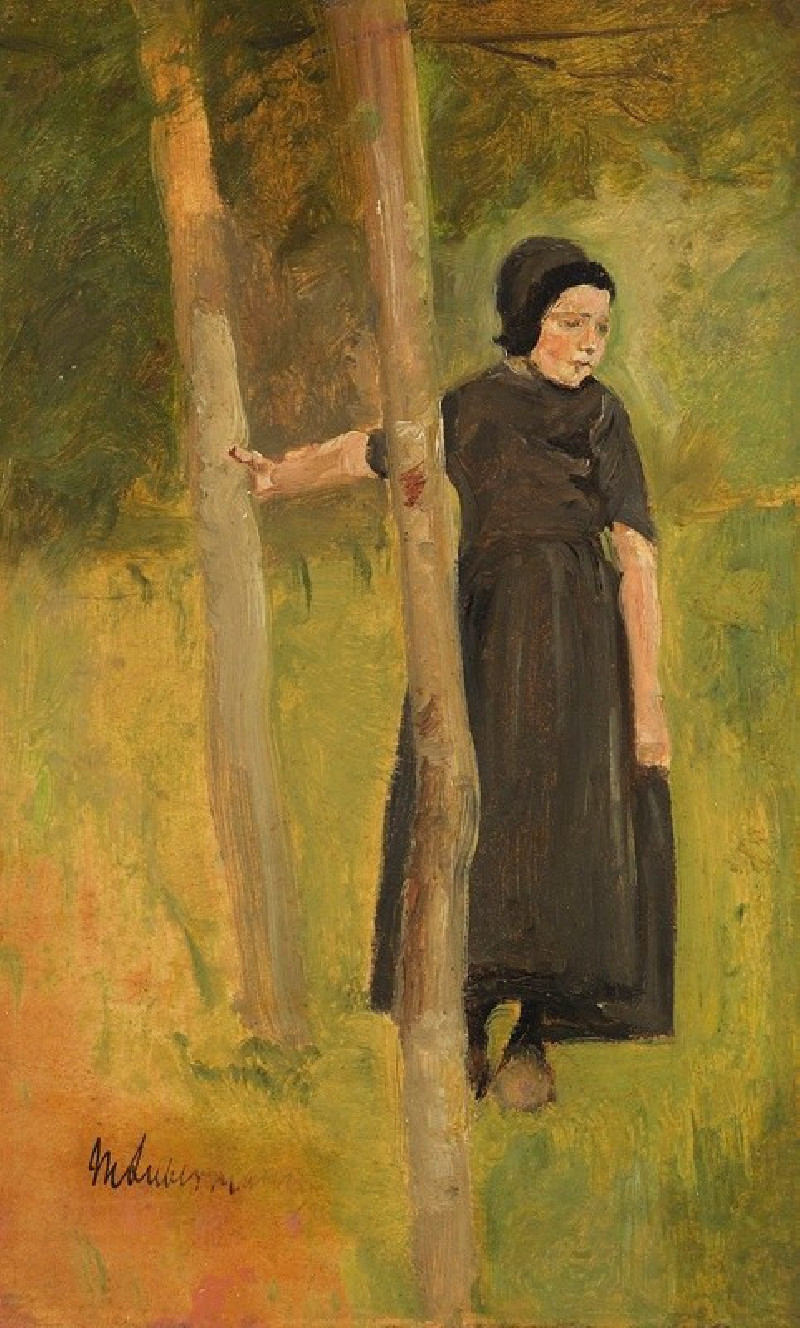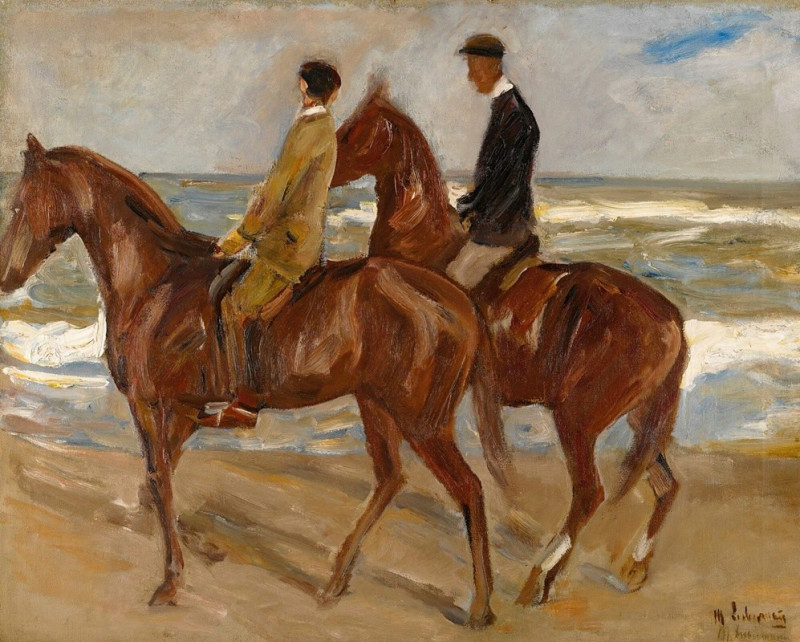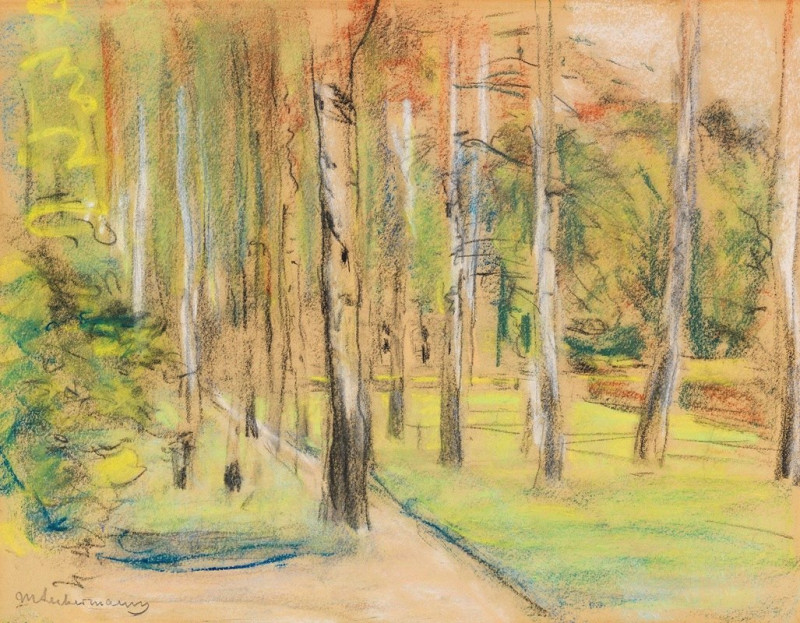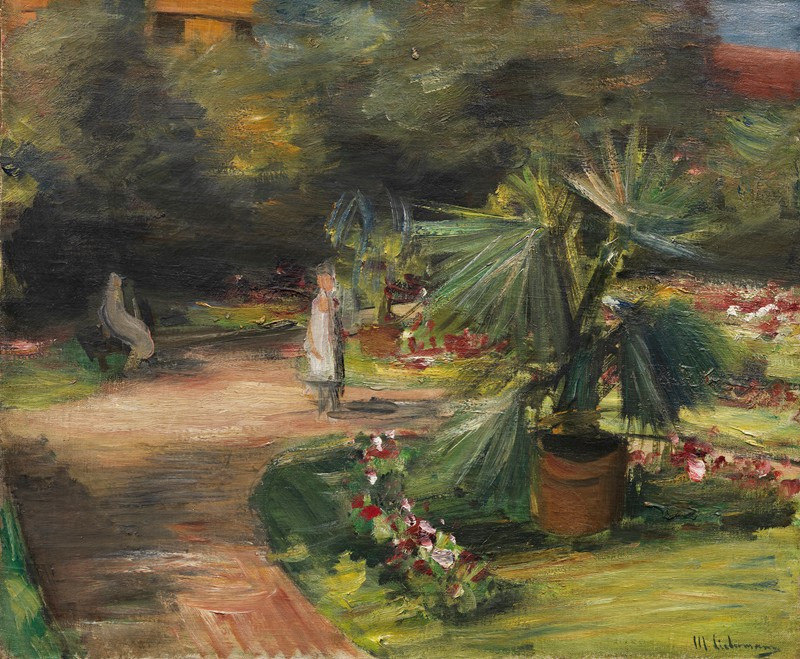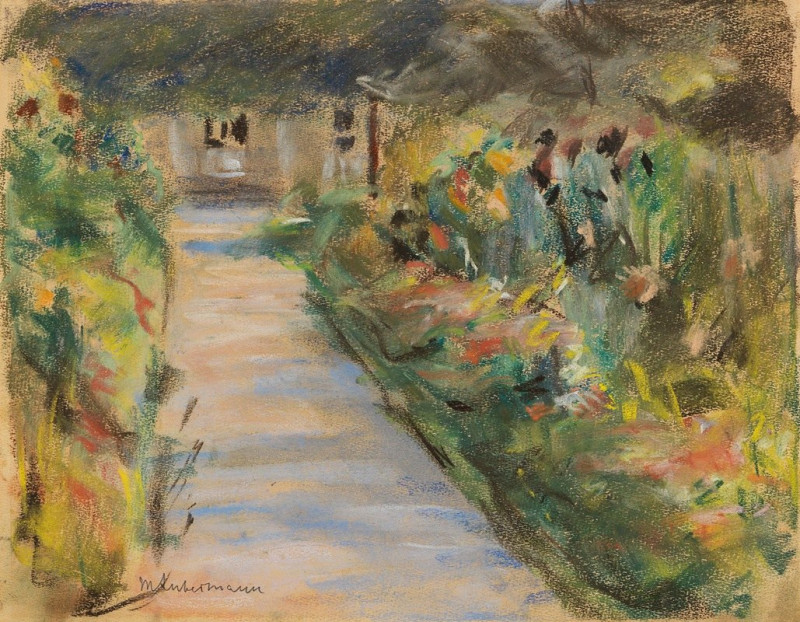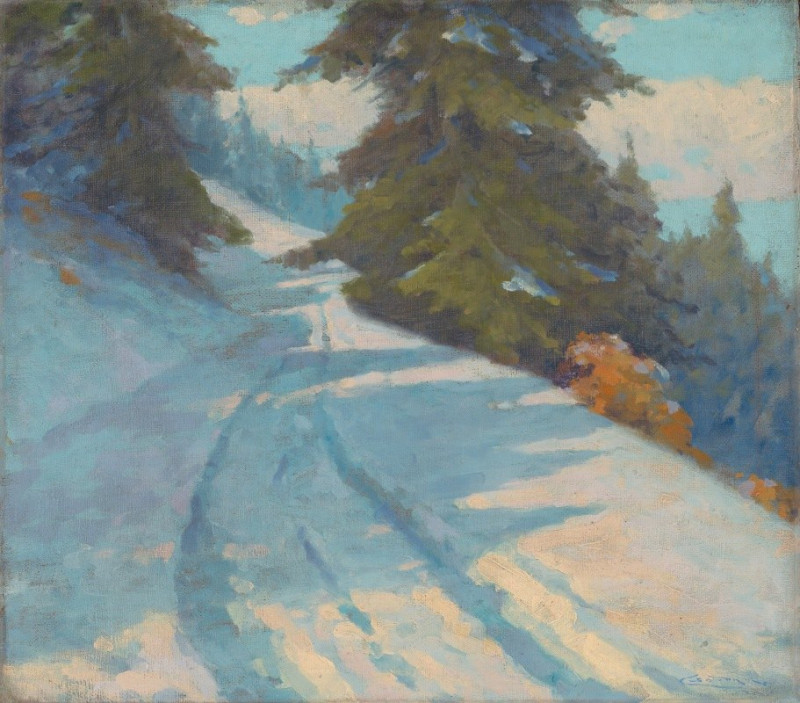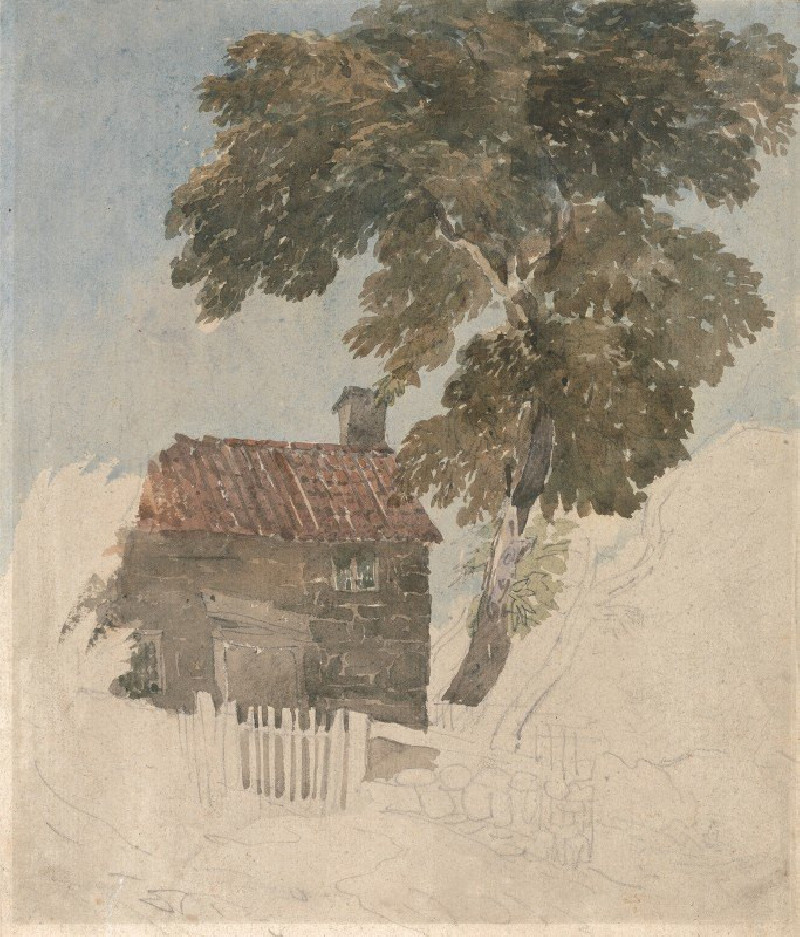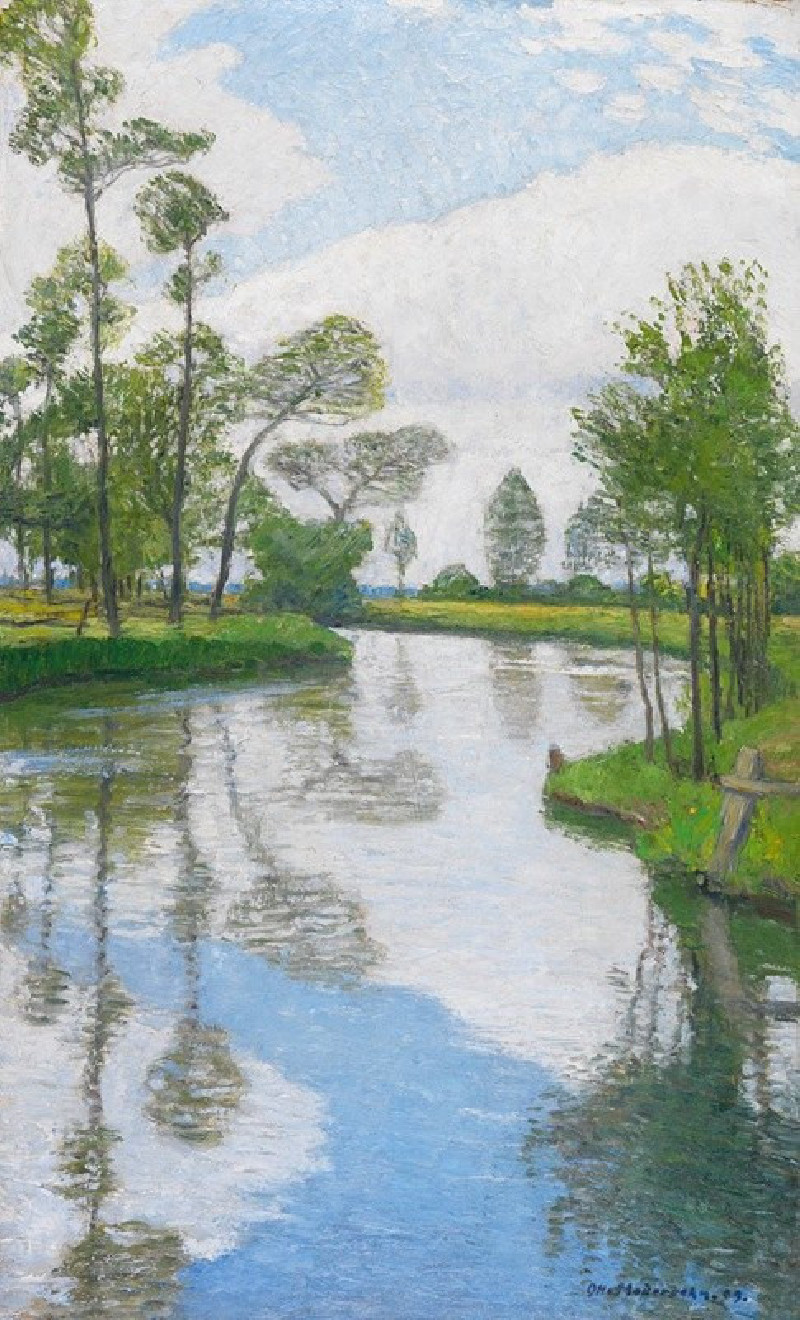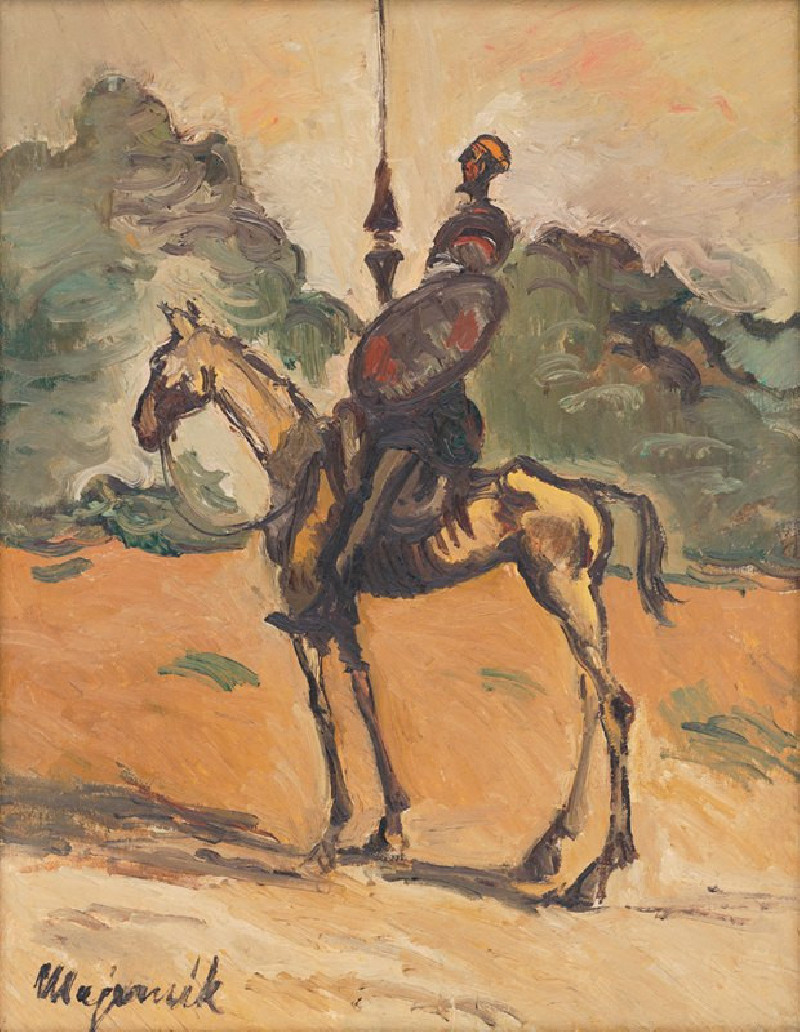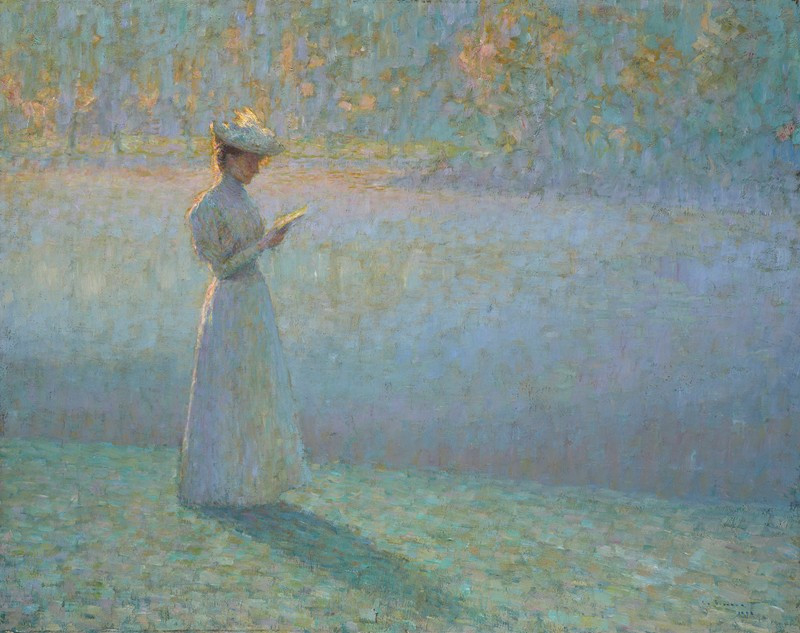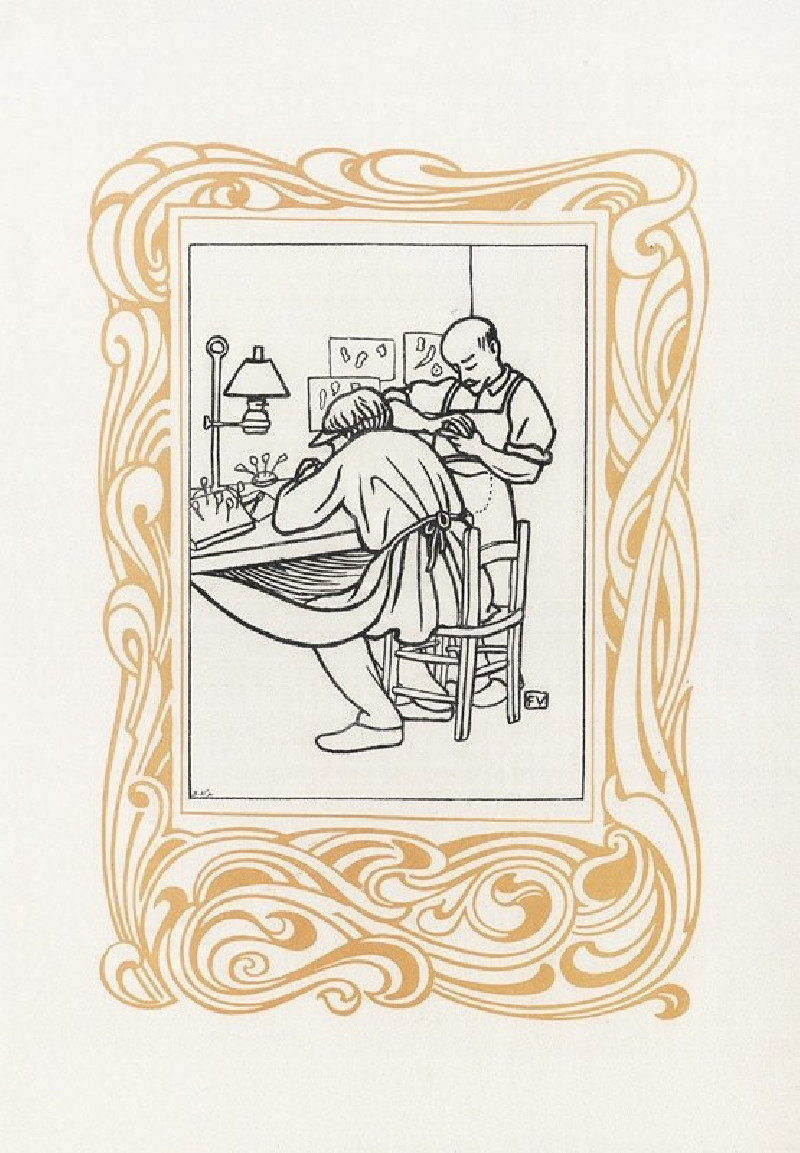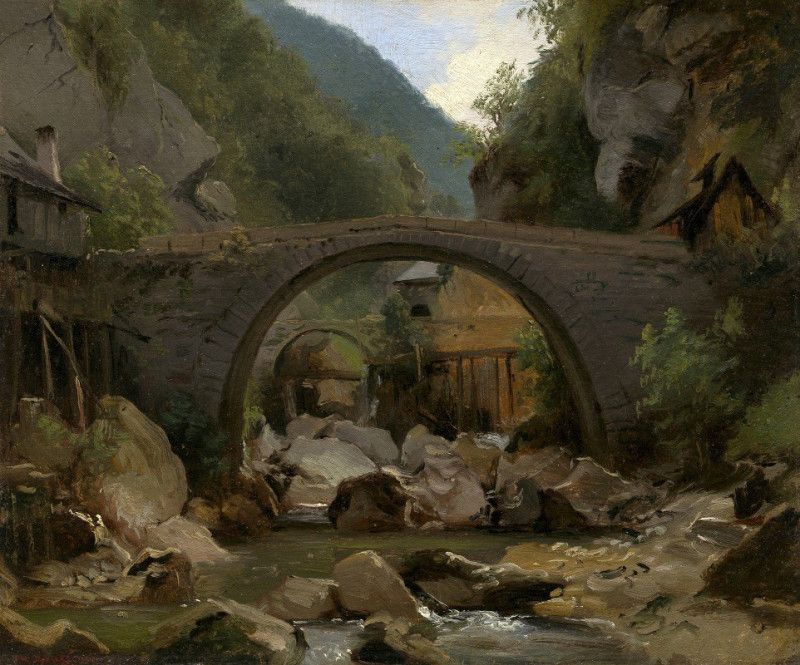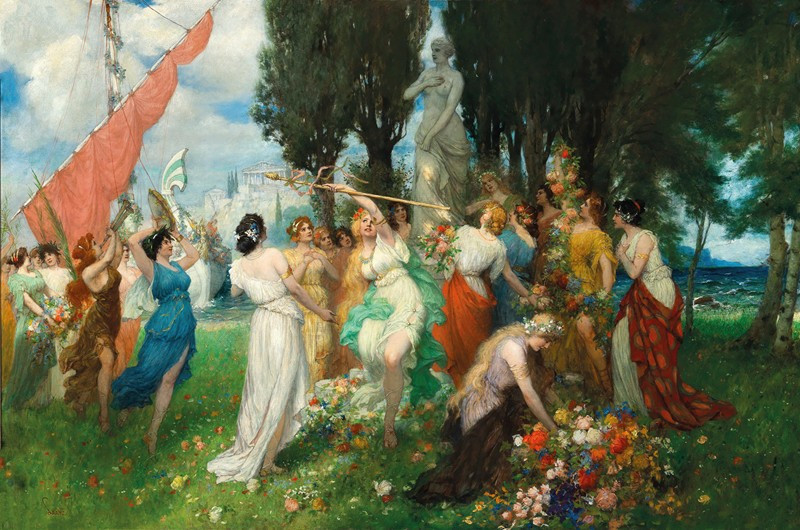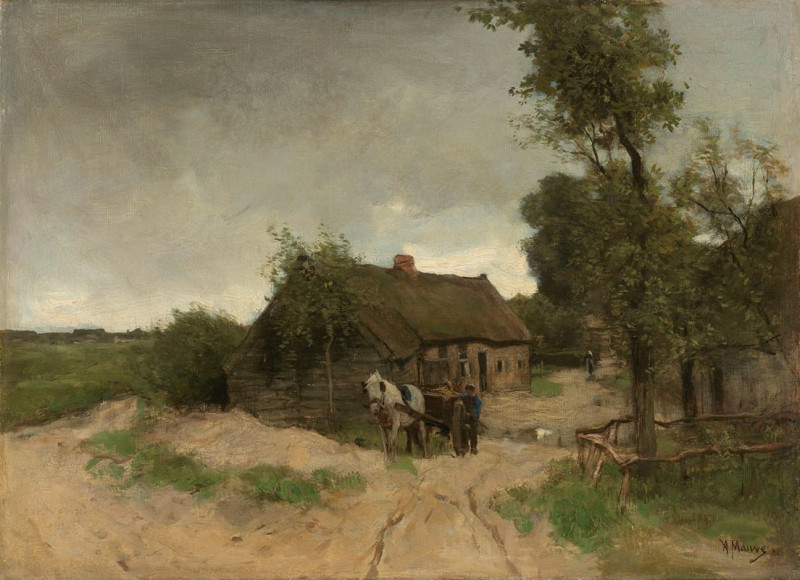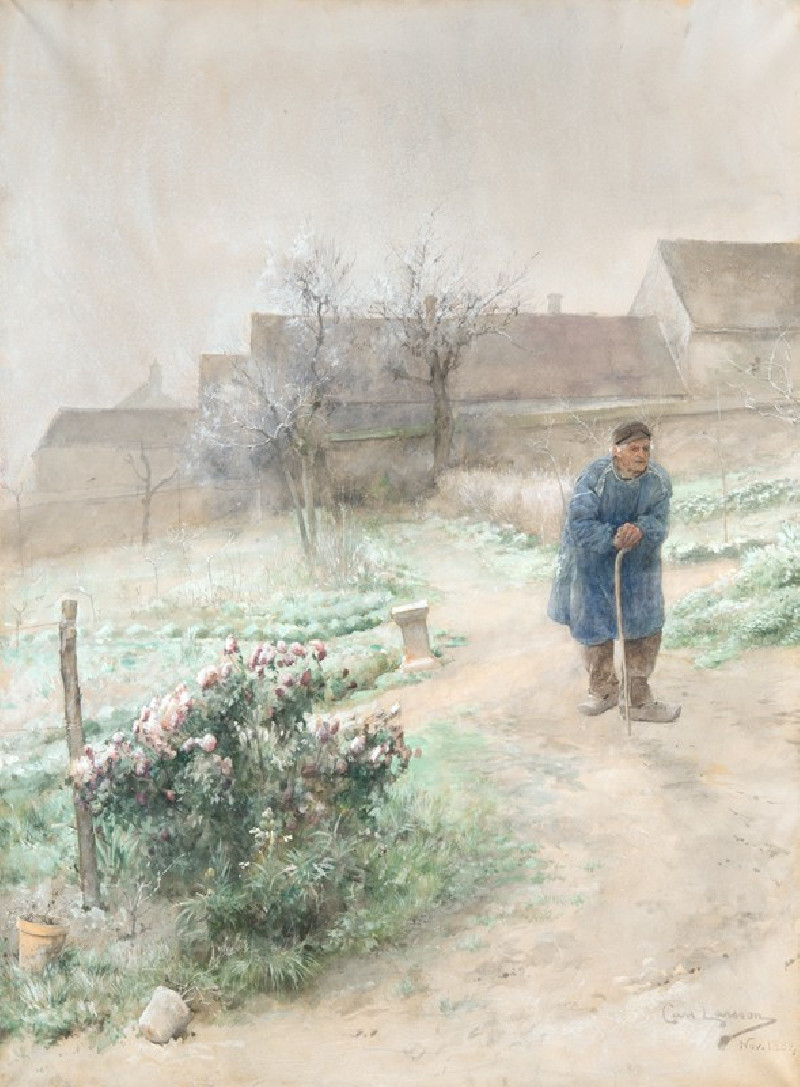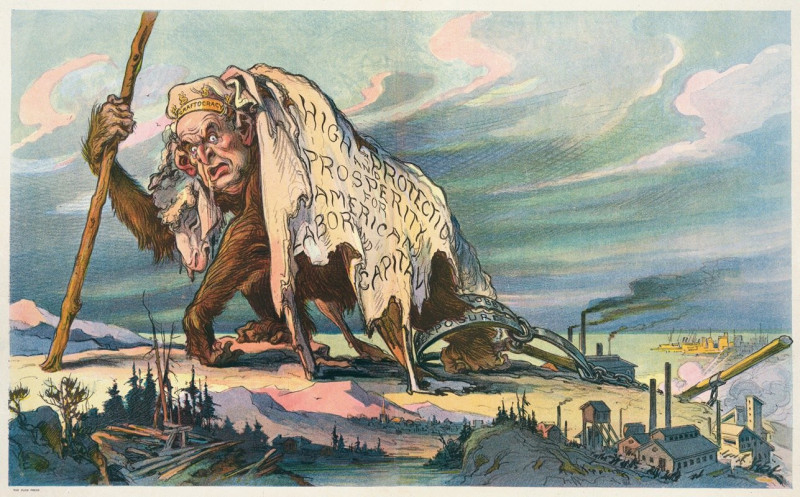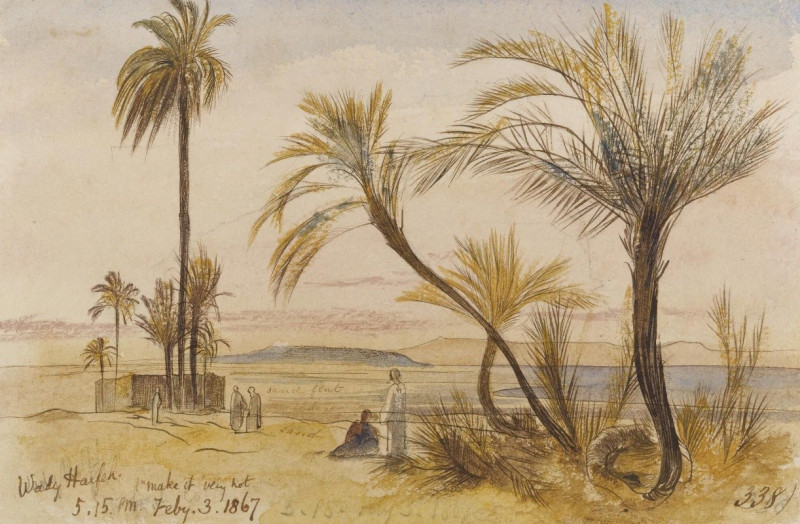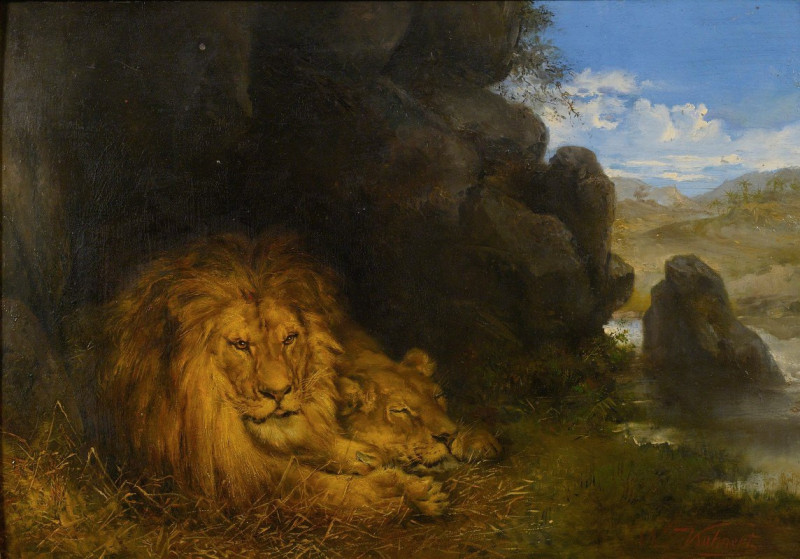Schreitender Bauer (1894)
Technique: Giclée quality print
Recommended by our customers
More about this artwork
Max Liebermann, a pioneer of German Impressionism, brings a vivid slice of rural life to the canvas in his painting titled "Schreitender Bauer" (Striding Peasant), created in 1894. This remarkable work captures the essence of a moment in the daily life of a peasant, characterized by movement and the weight of physical labor.The painting expertly demonstrates Liebermann's skill in capturing the naturalistic features of his subjects. The peasant, a mature man, is depicted with a dynamic posture, mid-stride. His expression is stern and focused, perhaps indicative of the hard work and determination required in his rural tasks. He wears a simple, earth-toned outfit that blends seamlessly with the muted greens and browns of the background, suggesting his close connection to the land.Interestingly, Liebermann’s use of color and light adds a poignant touch to the composition. The peasant’s face and hands are highlighted with shades of red and pink, contrasting with the overall earthy tones and adding depth to his rugged appearance. These subtle yet powerful elements speak to the artist's impressionistic influences and his ability to evoke emotion through color."Schreitender Bauer" is more than just a portrayal of a peasant; it is a reflection on the timeless themes of hard work and human connection to nature, rendered with sensitivity and a deep appreciation for the everyday challenges and triumphs of rural life.
Delivery
Returns
Max Liebermann was a German painter and printmaker of Ashkenazi Jewish ancestry, and one of the leading proponents of Impressionism in Germany.
The son of a Jewish fabric manufacturer turned banker from Berlin, Liebermann grew up in an imposing town house alongside the Brandenburg Gate.
He first studied law and philosophy at the University of Berlin, but later studied painting and drawing in Weimar in 1869, in Paris in 1872, and in the Netherlands in 1876–77.

